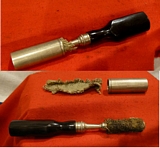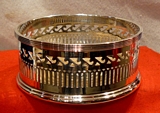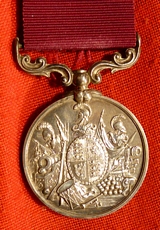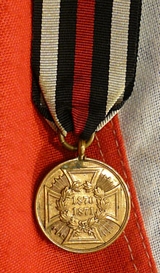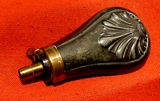Antique Arms & Militaria
A Very Good Original Antique 12 Bore Barrel Cleaner With Cover
A superb 19th century gun tool. With removable screw threaded carved horn handle. Made by W.Richards of Liverpool. Marked 12. read more
185.00 GBP
A Beautiful 19th Century English Copper Powder Flask
Not maker marked, but of very fine quality indeed. I small body dent. Good spring action to the multi measure spout. read more
185.00 GBP
A 19th Century English Copper Powder Flask
A most charming 19th century late George Ivthpowder flask for a hunting fowling piece or musket. Spring lacking, opening to seam. Priced for decoration only. read more
85.00 GBP
Highland and Agricultural Society of Scotland Prize Medal 1892
A seated female figure upon a dais, places laurel wreaths upon the heads of two standing agricultural workers. Rev. Inscription around a wreath with attribution text within. Andrew Hart for Chemistry, Veterinary College Glasgow . Size 45mm. Nice tone/colour read more
55.00 GBP
A Very Fine Mid 19th Century Silver Plated Shell Dish, Set on 3 Feet.
In superb condition, probably made by Elkington and Co. Beautifully crafted and of sublime quality. 5 x 5 x1,5 inches read more
175.00 GBP
A Nice Early 19th century, King George IIIrd Old Sheffield Decanter Coaster
a wine and spirit decanter gallery coaster in fine old plate, with deep turned carved mahogany base, pierced sides, multi ribbed rim edge and beize cloth on the bottom. Measures 5" in diameter x 2.25" tall. Excellent period condition. read more
220.00 GBP
A Very Fine Victorian Long Service Good Conduct Medal
Awarded to a Battery Quarter Master Sergeant in the Royal Field Artillery, the 1873 issue Medal. read more
185.00 GBP
The German Franco Prussian War Commemorative Medal of 1870/71
this is a campagian medal presented by Kaiser William I in his capacity as King of Prussia. The medal was presented to commemorate recipents service in the Franco Prussian War. The medal was presented to members of the united German armies. The medal was presented for combat service in gilt bronze, and non-combat service in steel. Each version bore minor differences in inscription and design. Claps were authorized on the 25th anniversary of the German victory, to commemorate selected battles. read more
75.00 GBP
A Superb 19th Century Britannia Metal and Brass Mounted Pistol Flask
A lovely flask, perfect for a set of cased pistols or a cased revolver etc. lacking a good flask. Excellent condition, with very good original gold lacquer finish to the brass. 4 inches long 2 inches across. Very small dent at the bottom on one side about 10mm x 5mm read more
295.00 GBP
Armouryantiques and militaria
The best militaria shop in the UK A Superb Case Hardened Steel Gun Lock Of a Greene Carbine 1856 Scarce British-Type Greene Carbine by Massachusetts Arms Company
Case-hardened swivel breech action with Maynard tape primer system. Lock marked: Queen's crown /VR/Mass.Arms Co./U.S.A./1856.
James Durell Greene was a prolific firearms inventor and determined to make his mark This carbine lock was manufactured by the Massachusetts Arms Company and exported to Great Britain after being inspected and stamped with the Queen's Crown by British inspectors in the USA. These were used by the British Cavalry in the Crimean War but re-exported to the USA after the Crimea War. These fine guns were deemed to be very accurate but the paper and linen cartridges of the time were criticised as being prone to swell in the damp and consequently the carbine did not find favour with the British Government. The carbine features an unusual "floating thimble" to obdurate the breech and an internal "pricker" that punctured the cartridge. It also featured Maynard Tape priming which was in the forefront of priming technology at the time and the mechanism for this is in perfect condition. The quality of workmanship is exceptional and it actions as crisply today as it did when it was made 158 years ago.
An exceptional item in outstanding condition. Only 2000 were manufactured and a complete carbine would be around ?3,000. read more
Price
on
Request


